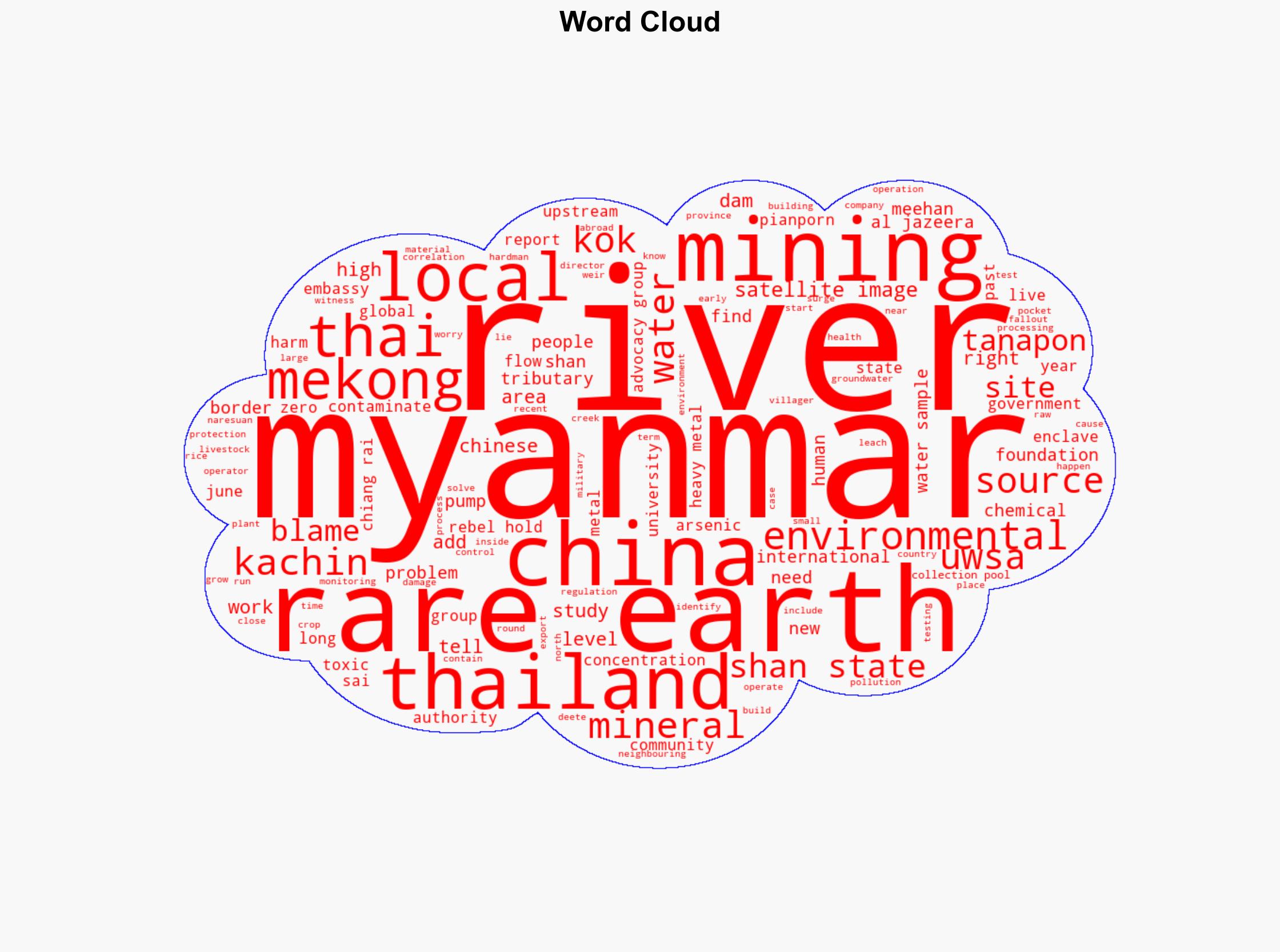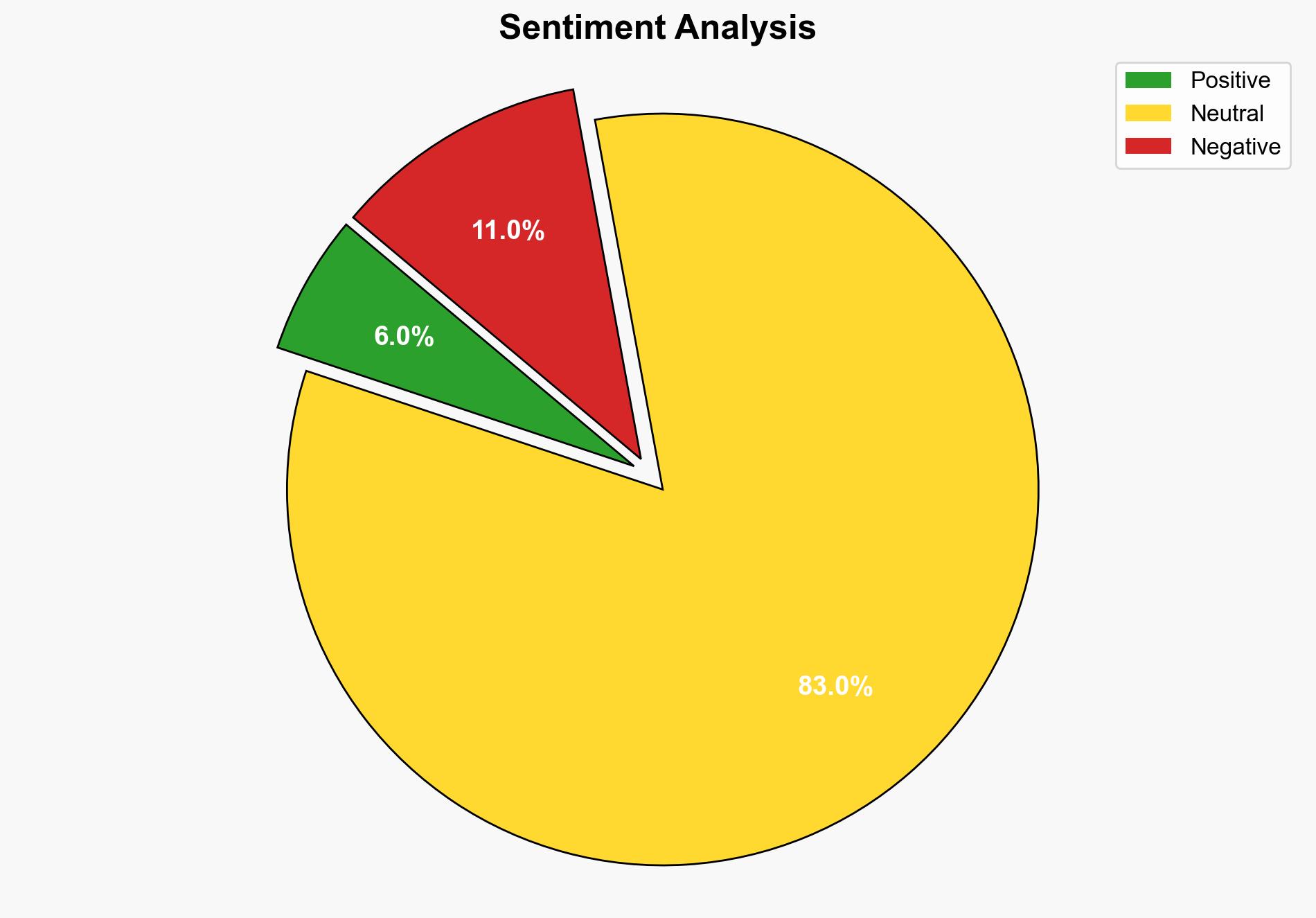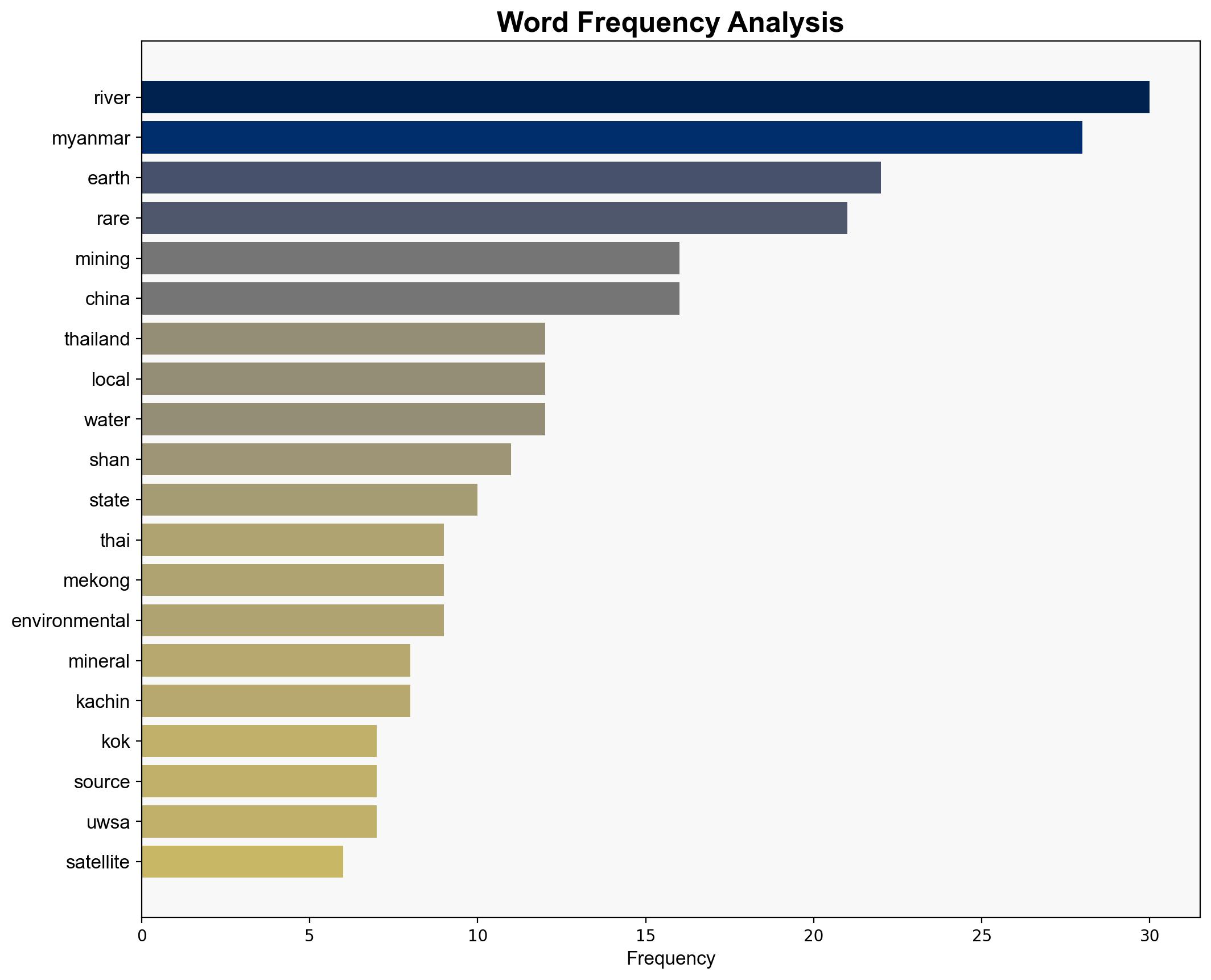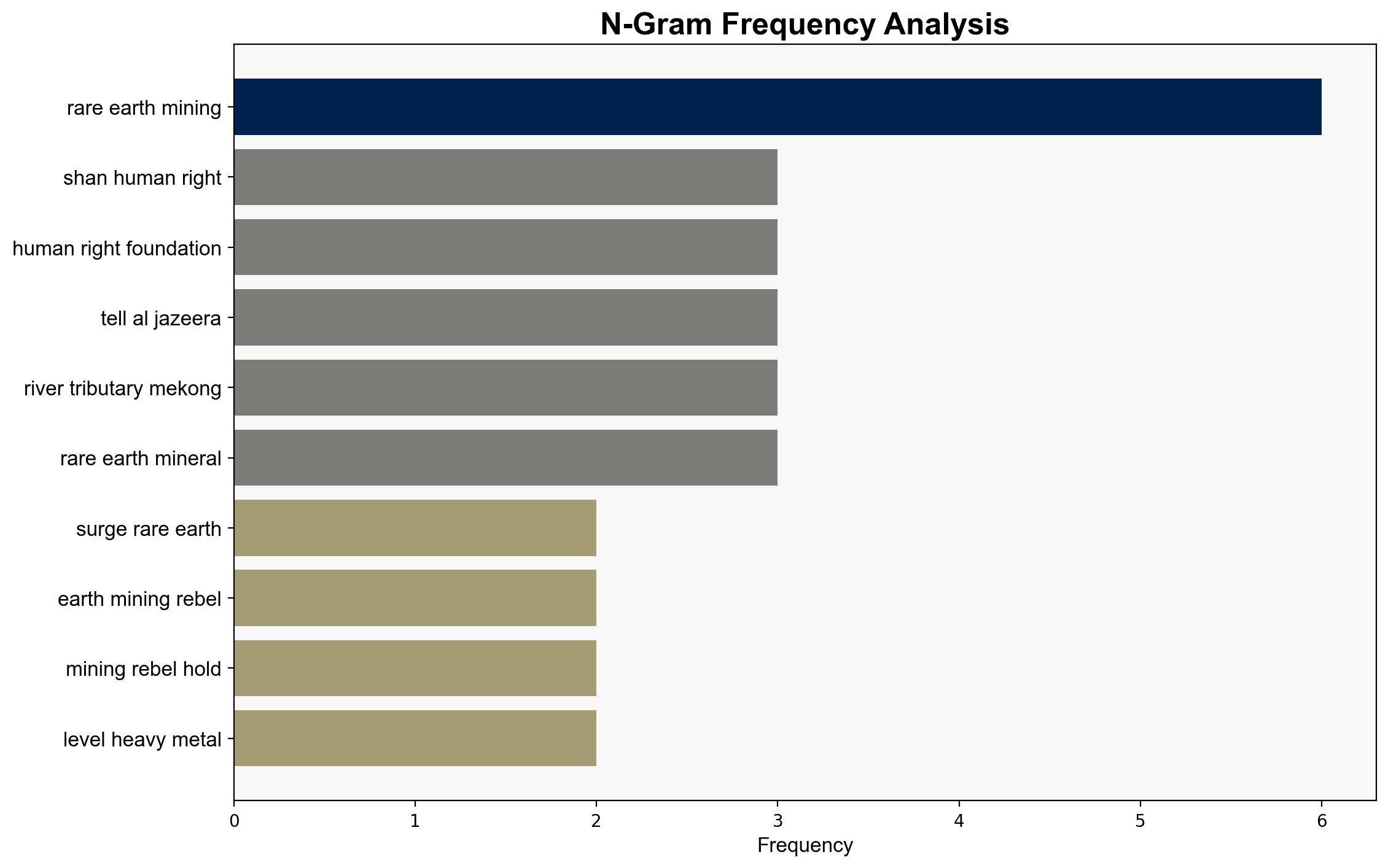Satellite images show surge in rare earth mining in rebel-held Myanmar – Al Jazeera English
Published on: 2025-08-07
Intelligence Report: Satellite images show surge in rare earth mining in rebel-held Myanmar – Al Jazeera English
1. BLUF (Bottom Line Up Front)
The most supported hypothesis is that the surge in rare earth mining in rebel-held Myanmar is primarily driven by Chinese demand for raw materials, resulting in significant environmental degradation in the region. Confidence Level: Moderate. Recommended action includes diplomatic engagement with Myanmar and China to address environmental concerns and support regional stability.
2. Competing Hypotheses
1. **Hypothesis A**: The surge in rare earth mining is primarily driven by Chinese demand for raw materials, with rebel groups in Myanmar facilitating operations to fund their activities. This is causing significant environmental damage, impacting local communities and transboundary water systems.
2. **Hypothesis B**: The increase in mining activities is a result of local rebel groups independently exploiting natural resources to strengthen their economic position, with China being a secondary beneficiary rather than the primary driver. The environmental impact is a byproduct rather than a direct consequence of Chinese demand.
3. Key Assumptions and Red Flags
– **Assumptions**:
– Hypothesis A assumes direct Chinese involvement or tacit approval of mining operations.
– Hypothesis B assumes local rebel groups have the capability and intent to independently manage large-scale mining operations.
– **Red Flags**:
– Lack of direct evidence linking Chinese entities to specific mining operations.
– Potential bias in reports from advocacy groups with vested interests.
– Inconsistent data on the exact source of water contamination.
4. Implications and Strategic Risks
– **Environmental Risks**: Continued mining could exacerbate pollution, leading to long-term ecological damage and health issues for downstream communities.
– **Geopolitical Risks**: Increased tension between Myanmar, Thailand, and China over environmental degradation could strain regional relations.
– **Economic Risks**: Disruption in rare earth supply chains could impact global markets, particularly in technology and defense sectors.
5. Recommendations and Outlook
- Engage in diplomatic dialogues with Myanmar and China to address environmental concerns and establish joint monitoring mechanisms.
- Support regional initiatives to develop sustainable mining practices and improve regulatory frameworks.
- Scenario Projections:
– **Best Case**: Successful diplomatic engagement leads to reduced environmental impact and improved regional cooperation.
– **Worst Case**: Escalation of environmental damage leads to regional conflict and significant economic disruption.
– **Most Likely**: Continued environmental degradation with periodic diplomatic tensions, but no major conflict.
6. Key Individuals and Entities
– Sai Hor Hseng: Spokesman for the Shan Human Rights Foundation.
– Pianporn Deetes: Southeast Asia Campaign Director for International Rivers.
– Tanapon Phenrat: Associate Professor at Naresuan University.
– United Wa State Army (UWSA): Rebel group controlling the mining region.
7. Thematic Tags
national security threats, environmental degradation, regional stability, resource exploitation





